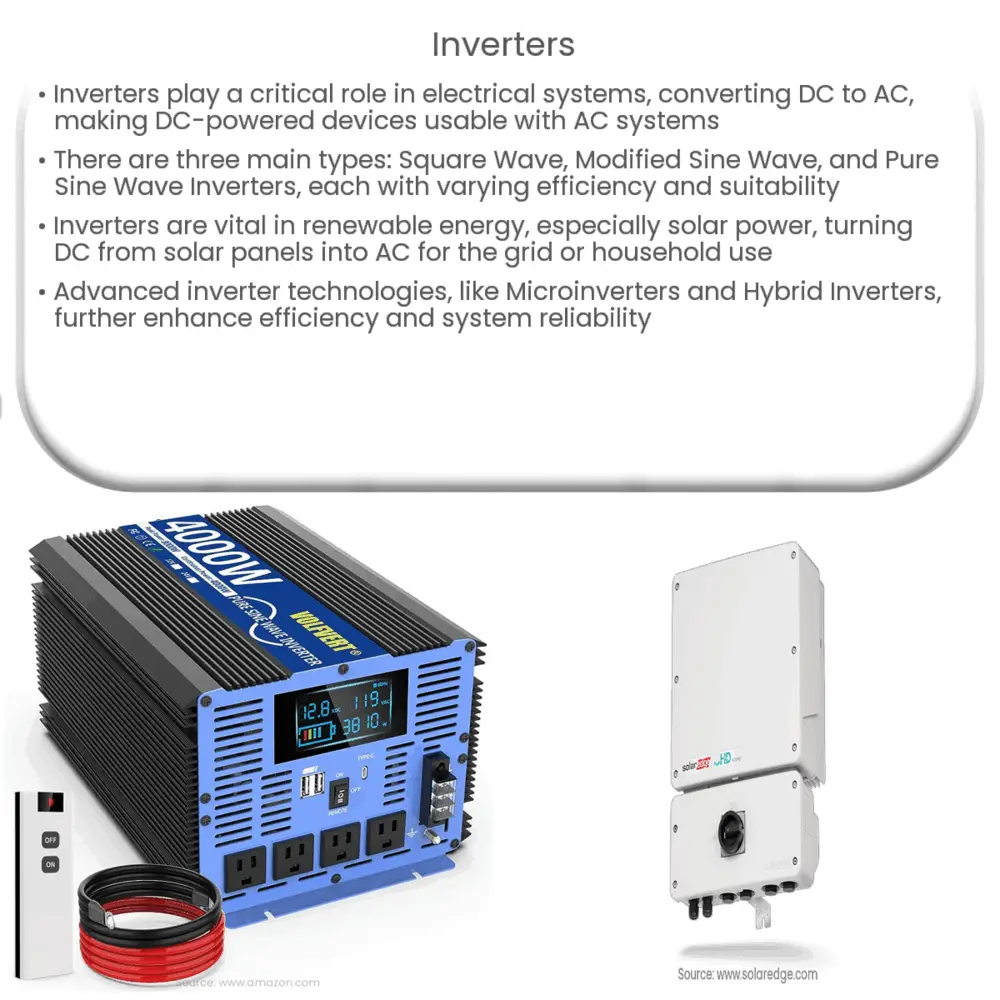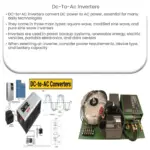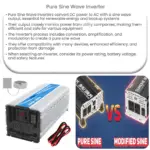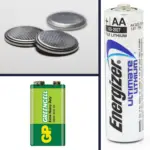Explore the function, types, and advancements of inverters in our comprehensive guide, highlighting their pivotal role in renewable energy systems.

Introduction to Inverters
Inverters, essential components in the realm of electrical and electronic engineering, perform a vital role in converting one form of electrical energy to another. The primary function of an inverter is to convert direct current (DC) to alternating current (AC), thereby enabling the use of domestic appliances that operate on AC when only a DC power source is available.
The Need for Inverters
The utility of inverters stems from the very nature of power generation and consumption. Electric power is produced as alternating current due to its efficiency in transmission over long distances. However, numerous devices such as batteries, solar panels, and fuel cells generate direct current. To bridge this gap and render DC-powered devices usable with AC electrical systems, inverters are essential.
Types of Inverters
- Square Wave Inverters: The simplest form of inverters, Square Wave Inverters, provide power that is sufficient for most electronic devices. However, their crude design makes them less suitable for sensitive electronics.
- Modified Sine Wave Inverters: A step-up from Square Wave Inverters, Modified Sine Wave Inverters offer a better quality of power and can efficiently run most household devices. Yet, they might not be the best fit for more delicate appliances.
- Pure Sine Wave Inverters: These are the most advanced and efficient inverters. They mimic the smooth sinusoidal AC power typically supplied by the utility grid, making them ideal for any type of electronic device.
Working Principle of an Inverter
In its most rudimentary form, an inverter consists of an oscillator that drives a transistor to invert the power from DC to AC. The DC power input is connected to a transformer through the switch. The oscillator rapidly flips the switch on and off, causing the voltage to alternate, which in turn creates an alternating magnetic field in the transformer. This field then induces an AC voltage in the secondary coil of the transformer.
Inverter Applications
Inverters find applications in a wide variety of areas, from domestic to industrial. They are a critical component in renewable energy systems such as solar power, where they convert the DC power produced by solar panels into AC power that can be fed into the grid or used directly by household appliances. Other applications include UPS (Uninterruptible Power Supply) systems, electric vehicle technology, and power backup systems for critical infrastructure.
Advanced Inverter Technologies
As technology continues to evolve, so too does the sophistication and capabilities of inverters. One such advancement is the development of Microinverters. These are compact units installed at each solar panel in a solar array, providing the benefit of converting DC to AC power at the source itself. This setup enhances the overall efficiency and reliability of the solar power system as it negates the energy loss that might occur due to a single central inverter.
In addition, Hybrid Inverters have made their way into the market. These advanced inverters combine the functions of a traditional inverter and a battery charger into one unit. They are designed to work with solar panels and a battery storage system, allowing homeowners to store excess solar power for use during power outages, night time, or periods of high electricity demand.
Inverters and the Future
With the world increasingly leaning towards renewable energy sources like solar and wind, the importance of inverters is more pronounced than ever. From enabling the use of solar power in homes to supporting the functioning of electric vehicles, inverters are at the forefront of this green energy revolution. Further research and development in inverter technology promise even more efficient and reliable systems, ensuring that inverters will continue to play a pivotal role in our energy-dependent future.
Conclusion
In conclusion, inverters are a critical component in modern electrical systems, bridging the gap between DC power sources and AC appliances. They play a central role in renewable energy, power backup systems, and electric vehicle technology. While the basic function of an inverter remains constant – converting DC to AC – advancements in inverter technology have led to more efficient, reliable, and multifunctional devices. The ongoing evolution of inverter technology is integral to our transition towards a more sustainable and energy-efficient world. Understanding their function, types, and applications is key to appreciating the crucial role they play in our everyday lives.




